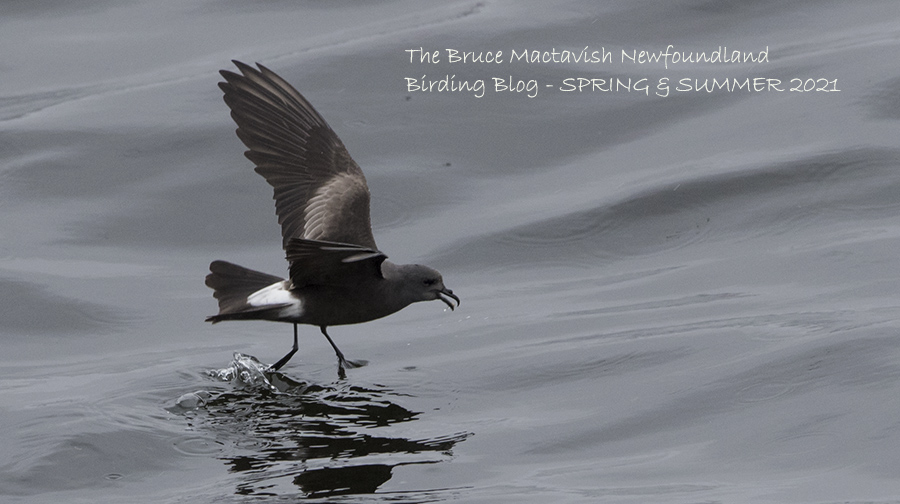At our house it is tradition on Christmas morning.that Bruce checks out the gulls in St. John's harbour and at Quidi Vidi Lake after the presents under the tree are opened and while the turkey cooks. This year it was a little different in that I started with a walk to the graveyard five minutes down the road to check out the meal worm feeder setup that Gerard Hickey has got working. Amazingly a Blue-headed Vireo has discovered it as well as a Ruby-crowned Kinglet and a Pine Warbler. It was an beautiful morning at +5C with sun and light winds. There were little insects flying around. It took 40 minutes sitting by the feeder before each of the three target birds made their visits but all three birds stayed in the area for a further 30 minutes. An adult Sharp-shinned Hawk made a close pass.
The Blue-headed Vireo in a flower pot, just one of the places where meal worms have been placed.
The vireo is friendly and used to people when they sit still and watch. This the latest BHVI in Newfoundland and I believe only the third ever in December. It was found in mid November.
I didn't know Ruby-crowned Kinglets would go to a bird feeder. This one goes after the suet mixture as well as the meal worms. They occasionally show up on Christmas Bird Counts in Newfoundland but I don't think there has been one in January. This bird should make it and maybe much farther into the new year.
Pine Warblers are no strangers to bird feeders and can survive a Newfoundland winter with a good steady supply of nourishment.
Gull watching at Quidi Vidi Lake was spoiled by two Bald Eagles so there were few gulls except for the semi-domesticated gulls standing shamelessly among pigeons waiting for handouts from people feeding the ducks.
Two American Coots are with the ducks at the Rennies River mouth. This one taking advantage of the bare grass before the next snow fall.
Some of the 70+ Tufted Ducks sitting around wondering what to do now that the lake has been mostly frozen for the previous 48 hours.
The wigeons depend on bare grass for food. Miracle how they survive the St John's winters. They were happy to see the thin snow cover vanish in the warm spring like air. This drake Eurasian Wigeon needs all the nourishment it can get to grow into a better looking 1st winter plumage.
Wigeons are often a little wary but a group 2 EUWI and 5 AMWI were well tamed today at the west end of the lake. This typical brown-headed female Eurasian Wigeon provided some great views.











No comments:
Post a Comment
Note: only a member of this blog may post a comment.